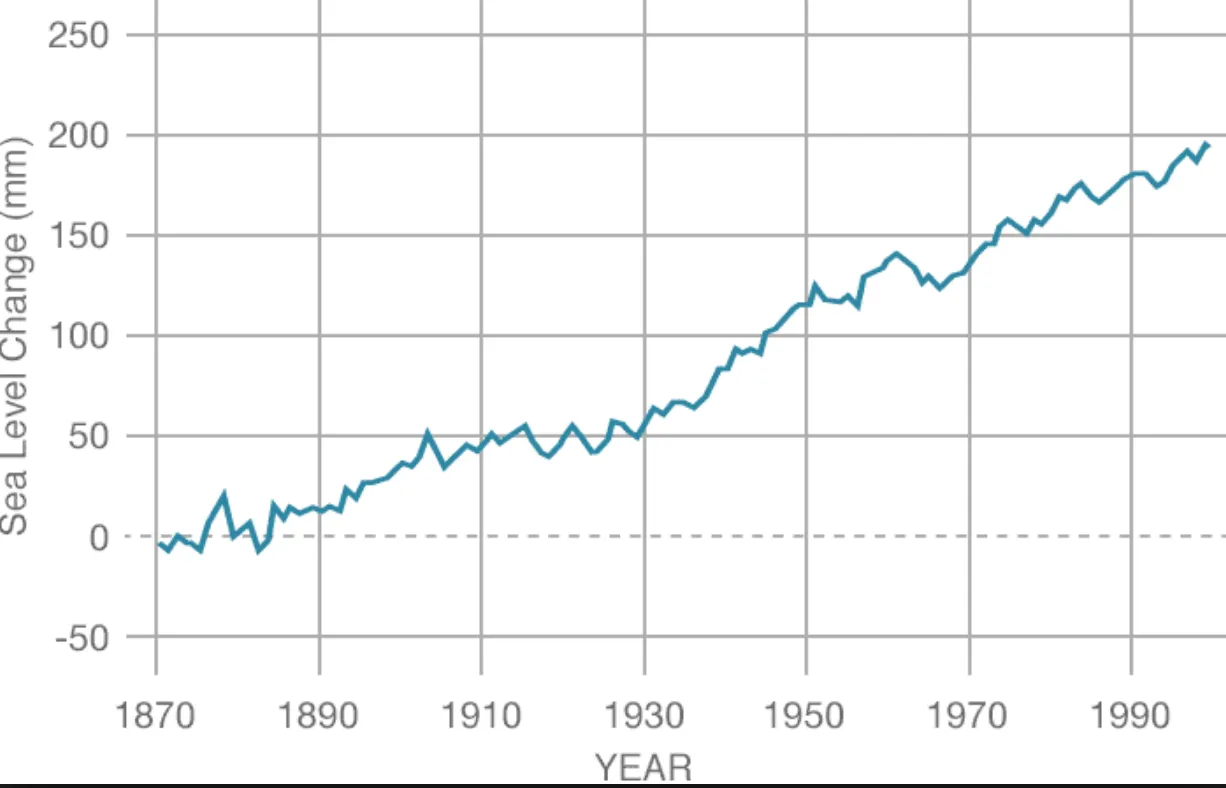Personally, the changes happening on both ends of the Earth are fascinating due to the effects that increasing temperatures have on our planet. When researching the topic of reflecting solar radiation for my last article about the consequences of melting ice, I came across the numerous pieces about massive icebergs breaking off of the mainlands. When people think of icebergs, for some reason they think of Titanic (and probably Leo himself). However, surprisingly the icebergs that made the news are far larger, to a point the size were compared to states. So I decided to dedicate this article as a continuance of the previous one, focused on how the effects of warmer climates can make an iceberg larger than 1,000 Sq Ft break off - and the consequences.

Figure 1: An ariel view of the large crack in Larsen Ice Shelf C, which found 10% of its mass break off of the shelf in the middle of 2017.
Image Source
On the East Coast of Antarctica lies a large mass of sea ice (estimated to be 78500 km) called the Larsen Ice Shelf. It's broken into 4 smaller shelves named Larsen A, B, C, D (and additionally lesser shelves named E, F, & G) which float along the northwest part of the Weddell Sea above a series of embayments. Commonly known as "bays", embayments are recessed, coastal bodies of water that directly connect a larger main body of water, such as the Chesapeake Bay whose water eventually drains into Atlantic Ocean. The Larsen Ice Shelf has been a ongoing case study amongst scientists for decades as it has been deteriorating as early as the mid 1990s.
In the past few decades, we've seen the Larsen Ice Shelf deteriorate and break off rapidly through unconventional means. Typically, ice shelves will lose break off large masses due to iceberg calving, which is when a chunk of ice is broken off a glacier due to it expanding. However, temperatures have risen by an average of 0.5 degrees Celsius per decade since the 1940s, which is causing the ice to break off. Larsen B, which is the size of Rhode Island and has been stable for over 10,000 years, partially collapsed in 2002. Recently in July 2017, Larsen C (which is the size of Delaware) had a large portion of 5,800 sq km has broken off of the ice shelf and shrinking it by 10%. While scientists are still debating whether or not the increased temperatures Antarctica were the cause of the break of Larsen C, it is clear that climate change directly deteriorated ice shelves A & B.

Graph created by NASA showing the increase in the Sea Level over time, with an exponential increase shown after mid 1900s.
Image Source
Since the early 1990s, the amount of ice melting into the sea has increased dramatically and caused the sea levels to increase at an accelerated rate. While we won't see a 2012 apocalyptic scenario - increased sea levels are a direct result of the added water from an increasing number of large iceberg and glaciers breaking off. Additionally, we've seen winters become shorter and spring coming earlier, which allows the sea to expand earlier due to the warmer waters. The potential negative impacts include deadlier hurricanes and a change in the local ecosystems, as marine life will have less oxygen and potentially decrease in size in order to adapt.
As glaciers and icebergs continue to melt at an accelerated rate, we can expect to see changes in coastal cities, the fishing industry, and even natural disaster response as rising warm waters directly affect all of these segments. Although it is inconclusive the level of effect climate change has had on the breaking of ice, it is clear that it's a significant part of the formula. Although the change is slow, it is still change that continues to have a lasting impact and can affect future generations.

Graphic created by scientists to show how the rise in sea level can effect coastal cities in the event of a natural disaster, due to the accessibility of surges to reach the mainland.
Image Source
In future posts, I will focus more on the impacts these changes have on specific industries and ecosystems. So far, I have written macro-heavy articles that relate to what the global impact will be. I'm am becoming increasingly interested in how coastal cities and particular pockets of the earth are changing and how they will adapt. If you are interested in how warming weather is effecting our oceans, you can check out my article on how oceans are losing oxygen due to increased temperatures
Bibliography
- https://climate.nasa.gov/news/2606/massive-iceberg-breaks-off-from-antarctica/
- https://en.wikipedia.org/wiki/Larsen_Ice_Shelf
- https://en.wikipedia.org/wiki/Bay
- https://en.wikipedia.org/wiki/Ice_calving
- https://climate.nasa.gov/vital-signs/sea-level/
- http://www.independent.co.uk/news/science/climate-change-fish-shrink-size-warm-waters-global-warming-cod-tuna-a7910216.html